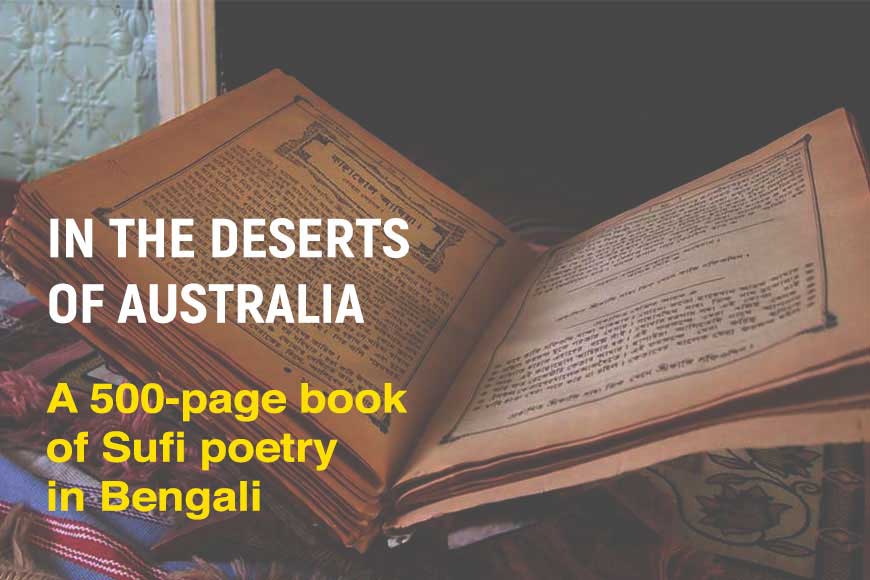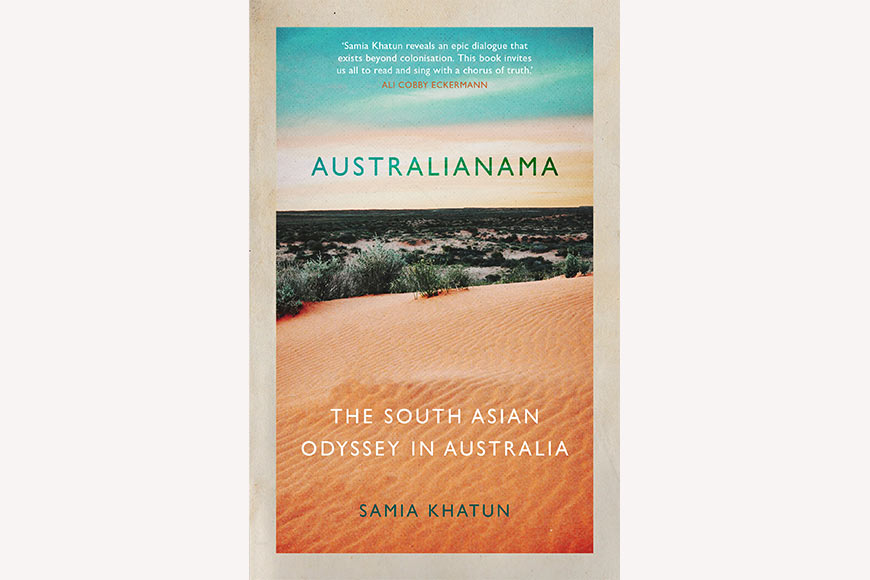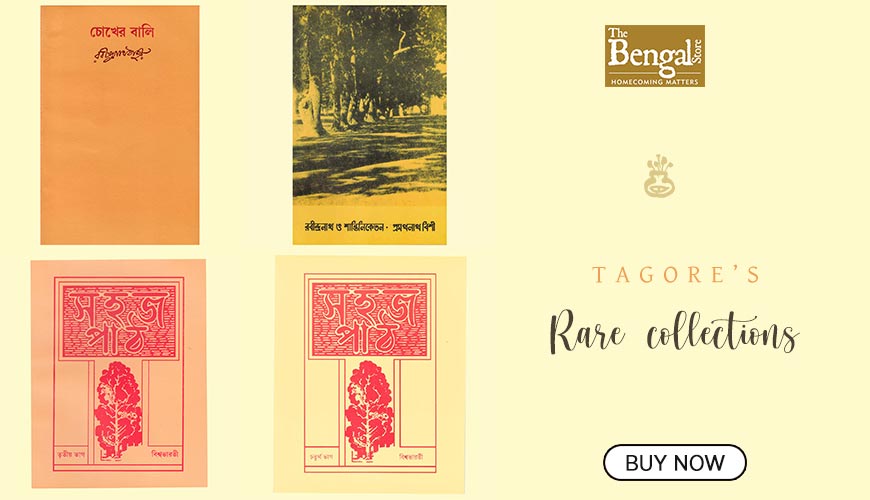19th century Bengali Sufi poetry book discovered in Australian deserts! Who took it there?

There is a twist to every tale. And to every historical event is linked a modern discovery. Present cannot exist without the past. But when way back in the 1960s, an ancient Bengali book printed in Kolkata, was located in the desert lands of Broken Hill in Australia, then it did open up a new chapter in history! At first it was presumed to be the Holy Quran, for who could ever believe that a Bengali book was lying in the deserts of Australia!
The book that was thought to have been written in the Arabic script, was brought and kept on a shelf in a mosque of Broken Hill, over 1,000 kilometres to the west of Sydney, and some 500 kilometres inland from Adelaide. Since then for the next half century, the book was revered as a copy of the Al Quran. But the myth was shattered on a July afternoon in 2009 when a gritty winter dust storm was raging and author and academic Samia Khatun first stepped into the little red corrugated iron mosque that still stands at Broken Hill. She noticed the book and became curious. As she turned the first brittle pages, she realized that it was not a Quran. Rather, it was a 500-page book of Sufi poetry in Bengali!
While tracing the history of South Asian immigration in Australia, it becomes visible that their history remain inscribed on the land itself. Throughout the Australian outback, beneath the network of dusty roads that criss-cross Aboriginal lands, lies the camel tracks that South Asian drivers once used to travel. From the 1860s, the South Asian merchants and labourers who worked in the camel transportation industry in Australia became known to white colonists by the umbrella term of the ‘Afghans.’ These so-called ‘Afghans’ were so central to inland transportation in Australia that when the two ends of the north-south transcontinental railway met in the town of Alice Springs in 1929, settler newspapers rejoiced in the arrival of the ‘Afghan Express.’ To this day the transcontinental railway is known as ‘the Ghan’ and throughout Australian deserts there remain the ruins of old 19th century mosques that South Asians built. By 1887, South Asians had built two mosques in Broken Hill.
Samia was puzzled. How could a Bengali book arrive in the middle of a desert -- the most difficult terrain of Australia? Printed in Kolkata in 1301 (Bengali calendar), or 1895, titled Kasasol Ambia (Stories of the Prophets) the book is a compilation of stories collected between 1861 and 1895. Sitting on the floor, Samia began the difficult task of deciphering Bengali, Persian and Hindi words woven into a tapestry of an older form of Bengali grammar. Khatun had to relearn Bengali as her family had migrated to Australia from Dhaka in the 1990s, when Khatun was barely seven years old and even contemporary Bengali was a language she had not read for a long time.

The first of its three poets, Munshi Rezaulla of Hugli, wrote that the poetry is a translation from Persian and Hindi into Bengali. While his Pir Sheik Chand Dada had long urged Rezaulla to write poetry, he was asked to translate the stories of the prophets by Kazi Sofiuddin—one of the most prolific publishers in the Bengali-language book industry in Kolkata.
At first Rezaulla despaired: ‘I'm so ignorant, in what form (rupa) will I write poetry?" However, realising that whatever, whomever you search, the protector grants,’ Rezaulla wrote. ‘I leapt into the sea. Searching for pearls, I began threading a chain.’ With the imagery of his immersed body evoking a pen dipped in ink, stringing together line after line of poetry, Rezaulla wrote ‘Stories of the Prophets (Kasasol Ambia) I name this chain.’
Beginning with an account of creation, the Kasasol Ambia opens with the image of a pen writing the world into existence by inscribing words into a tablet. Over the pages that follow Adam meets Purusha, Alexander the Great searches for immortal Khidr, Zulekha falls hopelessly in love with Yusuf, all while Azazel travels the world with a lantern of black light that cloaks all truths. With its verses set to the payar and tripadi, that have long structured the Bengali puthi, these were stories that were once performed out loud to audiences. These were tales spanning thousands of years and ending in the sixth year of the Hijri calendar, it was a book of popular history.
Long before Khatun understood the intricate metaphors contained in the Kasasol Ambia, what caught her attention about the book were the many questions raised by its presence in Broken Hill. If it was the "Afghans" who built the mosques in Australian interiors, then why was a Bengali book in the Broken Hill mosque?
She wondered with increasing urgency: Who on earth brought this 19th century Sufi text from Bengal to Broken Hill? Her quest led to a series of startling revelations. The year that the 1895 edition of the Kasasol Ambia, priced at Rs 4 began circulating through the lanes, bazaars and shrines of Kolkata, 38-year-old Anno Khan contracted with a Melbourne based shipping company to work his passage to Sydney. He joined the ranks of the lascar—the African and Asian seafarers who were paid from one-fifth to one-third the wages of white sailors. With workers from various parts of Bengal converging on dockside neighbourhoods of Kolkata where shipping companies recruited lascars, Anno Khan could have been from Noakhali or Narayanganj, Hugli, Kolkata or Dhaka.
 With a crew of 80 lascars, the SS. Darius departed Kolkata on March 31, 1895 loaded with 2,300 bags of rice, 1,123 bales of jute bags and 21 cases of nutmeg. Anno Khan was working as a fireman, shovelling coal into the engine. The vessel stopped in Penang and Singapore and then resumed its journey towards Australia. With the Kasasol Ambia detailing stories of boatmen, seafarers, travellers and stories of immortal Khidr, whose only known address was where the river meets the sea, could its stories have been performed on board a vessel such as the Darius? Performance was a central part of lascars’ voyages. As one British naval officer wrote "when several Asian manned ships are in port together ... a crowd of Moslems will foregather in a mess room or [deck] to make that weird, though rather intriguing cacophony of sound, Eastern music. They will sit cross-legged on the deck and chant their songs to a musical accompaniment."
With a crew of 80 lascars, the SS. Darius departed Kolkata on March 31, 1895 loaded with 2,300 bags of rice, 1,123 bales of jute bags and 21 cases of nutmeg. Anno Khan was working as a fireman, shovelling coal into the engine. The vessel stopped in Penang and Singapore and then resumed its journey towards Australia. With the Kasasol Ambia detailing stories of boatmen, seafarers, travellers and stories of immortal Khidr, whose only known address was where the river meets the sea, could its stories have been performed on board a vessel such as the Darius? Performance was a central part of lascars’ voyages. As one British naval officer wrote "when several Asian manned ships are in port together ... a crowd of Moslems will foregather in a mess room or [deck] to make that weird, though rather intriguing cacophony of sound, Eastern music. They will sit cross-legged on the deck and chant their songs to a musical accompaniment."
As the Darius approached Australian ports, tensions mounted between the lascar crew and the British captain. The captain's log reveals that the ship was assaulted by ‘strong gales from west to W.N.W.’ during this final, difficult leg of the journey. As the Darius approached Adelaide, Anno Khan was amongst those who began planning a strike. When the ship docked at Port Adelaide on April 30, 14 lascars left the ship refusing to continue working. In response to their protest to the marine superintendent that they had received an insufficient amount of food that was of extremely poor quality, settler police forced the sailors back to the Darius.
Anno Khan, along with another lascar, escaped during this scuffle. He made a run for Jervois Bridge, spanning across the mouth of the Murray River emptying into the sea. The port authorities made the two men pay 10 shillings and six dime each for a medical examination—a steep price at a time when monthly wages of a lascar were around Rs 18, or roughly just over one shilling. However, as an Adelaide newspaper reported ‘having passed muster and paid the money" the two South Asian sailors "triumphantly left the vessel and the Port, carrying their personal effects.’ On that autumn day in 1895, did a copy of Kasasol Ambia cross Jervois bridge in Anno Khan’s bundle of belongings?
The archival search for who brought the book to Broken Hill revealed story after story of not only striking sailors like Anno Khan, but also traders, cloth sellers, book-repairers, countless nameless ayahs and many married South Asian women who left for Australian ports in the 1890s. As racist legislation increasingly persecuted non-white people from the 1890s, Bengali speakers were amongst the many South Asians who sought work and refuge in interior Australia, where the camel industry remained the backbone of inland transportation until the close of the 1920s. Years after Khatun first began deciphering the Kasasol Ambia, she came across a detailed account of this puthi being performed.
It was an account that appears in the memoirs of Kazi Motahar Hossain (d. 1981). He was Khatun’s great grandfather. As he writes in Smritikatha, when he was four or five years old in around 1902, on some afternoons his father Kazi Gouharuddin would recite stories from a printed copy of Kasasol Ambia on a verandah in what is today the Faridpur district of Bangladesh. “Many people from the locality would travel great distances to hear the stories." Having memorised them, his father would "freely recite old (puranic) stories and historical episodes (itihasa) stretching from Adam to Prophet Muhammad without even looking at the book." Listening to these performances on the verandah, stirred in Kazi Motahar Hossain a desire to read." These stories spurred him to "quickly learn the letters of the Bengali alphabet and Arabic-Persian-Urdu scripts respectively. The stories of the prophets remained part of the repertoire of storytelling technique he used throughout his life to negotiate the most critical moments.









